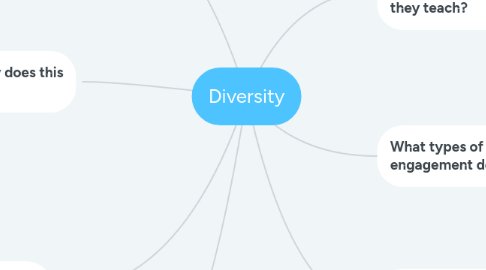Diversity
Fransisca Agustina PYP Teacherにより

1. How do they differentiate learning opportunities for their students? Based on what?
1.1. Their skills, interest and needs
1.2. based on readiness level/ability, interests, and preferred mode of learning
1.3. based on skill readiness and interest
2. How, when and why does this change?
2.1. After doing more exploration and being stimulated, I will observe and reflect to the learning opportunities made. Which one should be continued and modified or one need to be totally changed
2.2. Based on the needs, observation and assessment results
2.3. it will be based on the observation being done earlier. The observation result will inform the adjustment that needs to be made for the exploration whether it is the extended block of time, materials, or resources
3. What conversations do they have? With whom?
3.1. With teaching partners and parents to plan the next learning opportunities and get more information about students' skills and needs
3.2. About students needs/development? with partner, team, SLT, parents, students
3.3. teaching partners, parents, students, SEN committee (if needed)
4. How does this compare to how you get to know your students?
4.1. By observing students actions and responses before and after adjusting the learning engagement to know whether the adjustment works to fulfill students' needs and develop their skills
4.2. Getting to know my students will support me to plan the differentiated learning
4.3. the data gathering in the beginning helps me to get a picture of how my student look like. The ongoing data gathering helps me to modify the changes needed in the learning environment to support the students exploration
5. How do they unpack and connect to the diversity of the students they teach?
5.1. After choosing learning goals, I observe and assess the students to know their ability and needs. Then, plan learning opportunities that can support to develop their ability or fulfill their needs
5.2. by pre-assesment, information from last year (recorded data/from previous teacher), information from parents (during interview or conference), observation - having differentiation in learning
5.3. gathering data from family, from previous teachers (during class hand over session), observing while they are exploring in the learning centers, and listening to their responses during formal and informal discussions
6. What types of learning engagement do they use?
6.1. Free exploration and guided exploration
6.2. behavioral, cognitive, and emotional
6.3. personal exploration and group exploration
7. How do they adjust their learning engagements based on student need?
7.1. Vary the level of difficulties or use various materials for a certain learning engagement
7.2. by differentiated learning (using learning centers/create different learning environment)
7.3. providing different materials in different centers, find primary resources so students can listen and learn from various people


